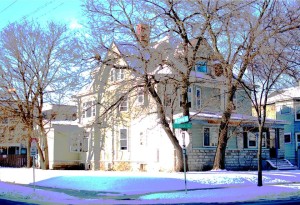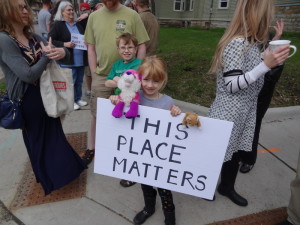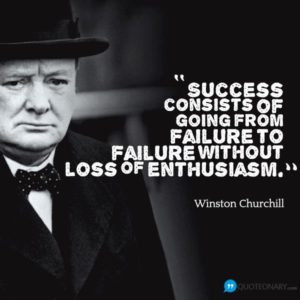
Welcome to the
Healy Project
Join us on Facebook
Send us an Email
Anders Christensen Receives Preservation Alliance of Minnesota Executive Director’s Award

Anders (right) receiving the award from PAM Executive Director Doug Gasek (Photo by Ceridwen Christensen)
“Anders epitomizes PAM’s mission of connecting people to places through hands-on building re-use, training the next generation of building tradespeople, and staunchly advocating for his neighborhood. For Anders, building re-use and strong communities are a way of life.”–Doug Gasek
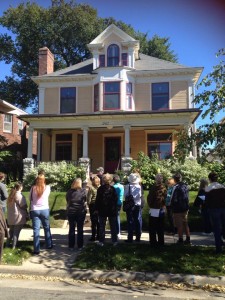
Anders talking to a tour group in front of a house by master builder Henry Ingham in the Wedge (Lowry Hill East) neighborhood.
Anders Christensen, president of the Healy Project and long-time preservation advocate, was this year’s recipient of Executive Director’s Award from the Preservation Alliance of Minnesota. At the PAM Gala and Awards event at the St. Paul Athletic Club on October 11, 2018, Anders received the award from Doug Gasek, the Executive Director, for his hands-on work in restoring buildings and preservation advocacy through his work with the Healy Project.
In his remarks, Gasek noted, “Whenever we think of Anders Christensen, we think of his optimism, passion, is craftsmanship, entrepreneurship; his inquisitiveness, and generally just his joy of life. Anders gets to go to work every day at his Minneapolis-based company, TigerOx Painting, specializing in painting, plaster repair, paper hanging, and other finishing trades. Anders knows how crucial it is to pass on his knowledge of the trades to future generations. . . .Anders is also the founder of the Healy Project, a nonprofit dedicated to sharing the architectural legacy of Minneapolis master builder T. P. Healy. He has dedicated countless hours to research and education about Healy and it has resulted in the growing community pride. Anders sees more than the architectural gems in the neighborhood, he sees the people and the places and the possibilities.”

Anders giving a tour of the Healy Block Historic District with researcher Ezra Gray. (Photo by Madeline Douglas)
Many friends, relatives, Tiger-Ox colleagues, and Healy Project members were on hand to see Anders receive this well-deserved award for his work in building restoration and preservation advocacy.

Anders talking with state Sen. David Senjem, recipient of the PAM President’s Award for his work at the capitol in support of preservation.–(Photo by Trilby Busch)

Healy Project board members (-l-r): John Cuningham, Anders, Christina Langsdorf, Gary Thaden, Sally Cuningham, Trilby Busch (Photo by Ceridwen Christensen)
For Anders’ comments on receiving the award, see https://healyproject.org/anders-christensens-remarks-on-receiving-preservation-alliance-of-minnesota-award/
–T.B.

Anders reading his remarks as PAM Executive Director Doug Gasik and Board President Steve Knight look on.
Remarks by Anders Christensen on receiving the Executive Director’s Award of the Preservation Alliance of Minnesota, October 11, 2018:
I want to thank the Preservation Alliance of Minnesota for this award. It is a great personal honor; I am most grateful. When the awards were announced publicly, I congratulated Senator David Senjem. This is what he messaged me: ”Kind of clumsy. Don’t legislate for awards or public recognition. . . To be sure it is impossible to legislate alone and everything I get credit for was done with help.”
The construction of buildings is a team sport. Everyone involved in the construction process must work together. We are competing, not against each other, but against the clock and against the budget. I never imagined growing up that I would end up in the building trades. I was born and raised in Duluth. I came to Minneapolis in 1972 to pursue a PhD in the literature of the English Renaissance— William Shakespeare, and all the other brilliant wordsmiths of that great age.
In 1976, the American Bicentennial Year, my wife Trilby and I bought an old house in the Wedge, the Lowry Hill East neighborhood of Minneapolis. It had been built in 1885. It was a vernacular Victorian built by a master builder. It was decidedly pre-Modern, from another age. In the aftermath of Watergate and the Vietnam War, I think we were searching for something in the past that would help us find our way forward.
We began to do research. Suddenly, it came alive to us. It connected us to a previous generation. We dove into the restoration process. It is hard to convey the intensity of the community of restoration and preservation that happened in that period of the late 70’s and early 80’s. Anyone who has gotten the restoration bug knows what I am talking about. We were a group of people with a common purpose, curiosity, and a willingness to share what we learned with each other.
I had walked away from the academic life in 1977. I was drawn to a life of action. There was also something very compelling about the study of local history. When you study Shakespeare, you also have to study four hundred years of other people studying Shakespeare. When I started my study of master builder T. P. Healy in 1978, I was studying someone that history had forgotten about. There were no footsteps in the snow. My research of T. P. Healy led me to John Cuningham, a young architect and T.P. Healy’s great grandson. I have often teasingly called John “The Heir.”
We are all heirs. We have all received an inheritance. It is not something we choose or earn by effort, or work for, or deserve. Inheritances are gifts from generations that have gone before. We probably think first of money through a will. But we also receive a genetic inheritance. Politically, we have received the inheritance of a democratic republic in the United States of America. Again not things we choose, earn, work for, or deserve.
We have also received an inheritance of a built environment, a land with buildings on it. We did not design them with our imaginations; we did not build them with our hands; we have not maintained them in the years before they became ours. Our old buildings, our historic buildings are our inheritance. And if we received an inheritance of money from an ancestor, who would throw it away? Buildings are no different.
John Ruskin, the great Victorian art critic and social reformer says this about buildings in the Lamp of Memory, one of the Seven Lamps of Architecture:
“Of more wanton or ignorant ravage it is vain to speak; my words will not reach those who commit them, and yet, be it heard or not, I must not leave the truth unstated, that it is again no question of expediency or feeling whether we shall preserve the buildings of past times or not. We have no right whatever to touch them. They are not ours. They belong partly to those who built them, and partly to all the generations of mankind who are to follow us. The dead have still their right in them: that which they labored for, the praise of achievement or the expression of religious feeling, or whatsoever else it might be which in those buildings they intended to be permanent, we have no right to obliterate. What we have ourselves built, we are at liberty to throw down; but what other men gave their strength and wealth and life to accomplish, their right over does not pass away with their death; still less is the right to the use of what they have left vested in us only. It belongs to all their successors.”
My study of master builder T. P. Healy has gone on for over forty years now. I have been increasing intrigued with the role of the master builder, the man who both designs the building and builds it. It is like a composer conducting his own work. But when we say Healy “built” the building we mean that he directed and organized the construction. The composer and the conductor are dependent on the entire orchestra to make the music, otherwise there is no sound, no music. The same is true in building. As a painter, I am like a second bassoonist. I am essential to the creation of the sound, but only a part of a much larger whole.
I have been working on people’s houses for close to forty years now. I get to work for people that I love helping them care for the houses that they love. I have also had the opportunity to teach many young people how to paint who have worked for me over the years. It never gets old. It is always the process of becoming. As painters we maintain older buildings so that they can be passed on to the next generation.
I want to acknowledge some of the people here tonight. Trilby Busch and I started this journey forty years ago. We continue our work together and are proud parents of our two daughters. Daughter Ceridwen Anne, who grew up in the chaos of an old house restoration, went on to become my business partner for twenty years. My big brother in the trades is John Erler, the master carpenter of Swede Hollow. My former business partner Rachel Reksten Taylor; my current partner Jeremy Wikre. My two sons William Hollender and Peter Hollender both worked for me when they were in college. I have worked for PAM teaching classes over the last four or five years. Natalie Heneghen, the education coordinator, has made everything work, has been a joy to work with. Jamila, who took a PAM class I taught a couple weeks ago, learned how to repair sash windows with broken cords. And last but not least my wife Christine who lets me pick the colors in our house and supports me when I go tilting at windmills, defying the powers that be, and generally following my muse in this world. I wish my parents Chris and Dory Christensen could be here. They taught me everything by the way they led their lives. My mother-in-law, Avis Hefner, is here from Sioux City, Iowa. I am touched that she made the trip to be here tonight.
Thank you to all of you here present for your support of the Preservation Alliance of Minnesota and for the ways in which you individually work for the preservation of our architectural heritage. And, again, thank you PAM for this honor.
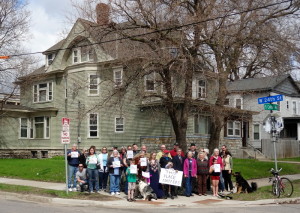
Supporters of the Healy Project gather in front of the Orth House for a photo to be posted on the National Trust’s page, “Places That Matter.”
The story of the fall of the Orth House will be told as part of a talk and exhibit on preservation advocacy sponsored by Preserve Minneapolis and the Preservation Alliance of Minnesota. Anders Christensen of the Healy Project will narrate the two-year- long fight to save the 1893 Healy-built house from demolition. The story of the Orth House, along with other stories of preservation advocacy, will be part of a talk and discussion at the Hennepin History Museum, 2303 Third Ave. South. Thursday, August 17th, 6:30-9:30 p.m. The museum is hosting an exhibit of these stories beginning August 10th.
If you can’t make it to the talk or exhibit, you can read about the fight for the Orth House, its demolition and the aftermath on posts on this blog. It’s a story that’s painful for those of us who fought to save it. . . .and a story that members of the City Council, City Planning, and local developers would like to forget. But it should and must be told.
The deck is almost always stacked against old historic buildings when developers take their promises of higher density and higher tax base to City government. The big triumph over the small, the new over the old, the affluent over those of modest means. The Healy Project will keep fighting as long as old buildings are threatened. And they will always be threatened.
T.B.


